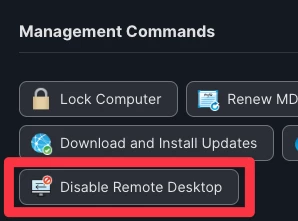We ran into an issue where one of the higher-ups within our organization was having printer troubles and one of our technicians remotely logged into their Mac with the managed admin credentials. The higher-up took issue with this as the user's account does contain sensitive documents and they're not a fan of the possibility that anyone in our department is able to remotely log in using the Screen Sharing app. Any ideas on how to designate Jamf Remote Assist as the only RD software and possibly disable or remove Screen Sharing capabilities without completely disabling RD? Ideally, the end-user would have to allow the screen sharing session and the Screen Sharing app allows any user to connect if they have the correct admin credentials.
Enter your E-mail address. We'll send you an e-mail with instructions to reset your password.







